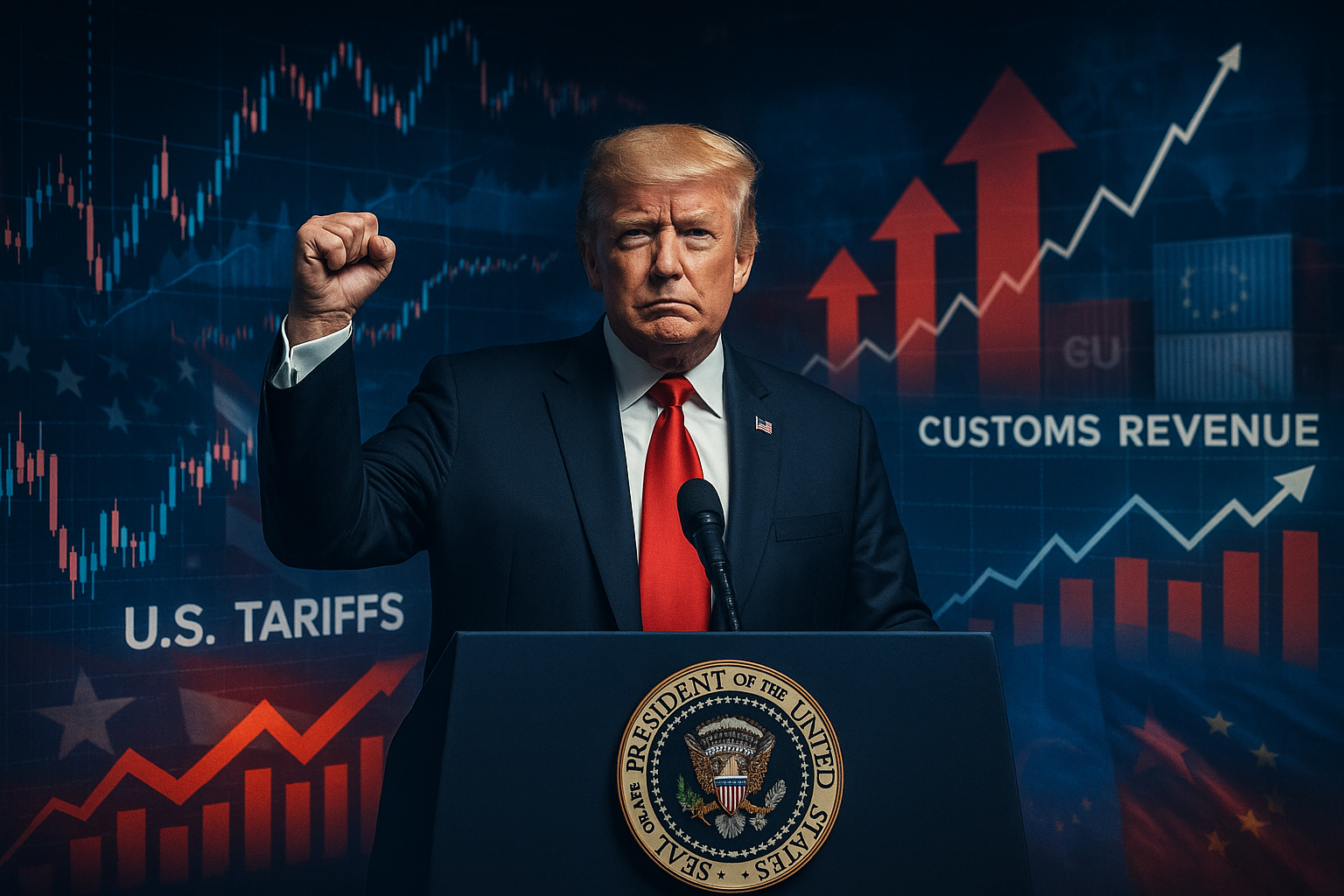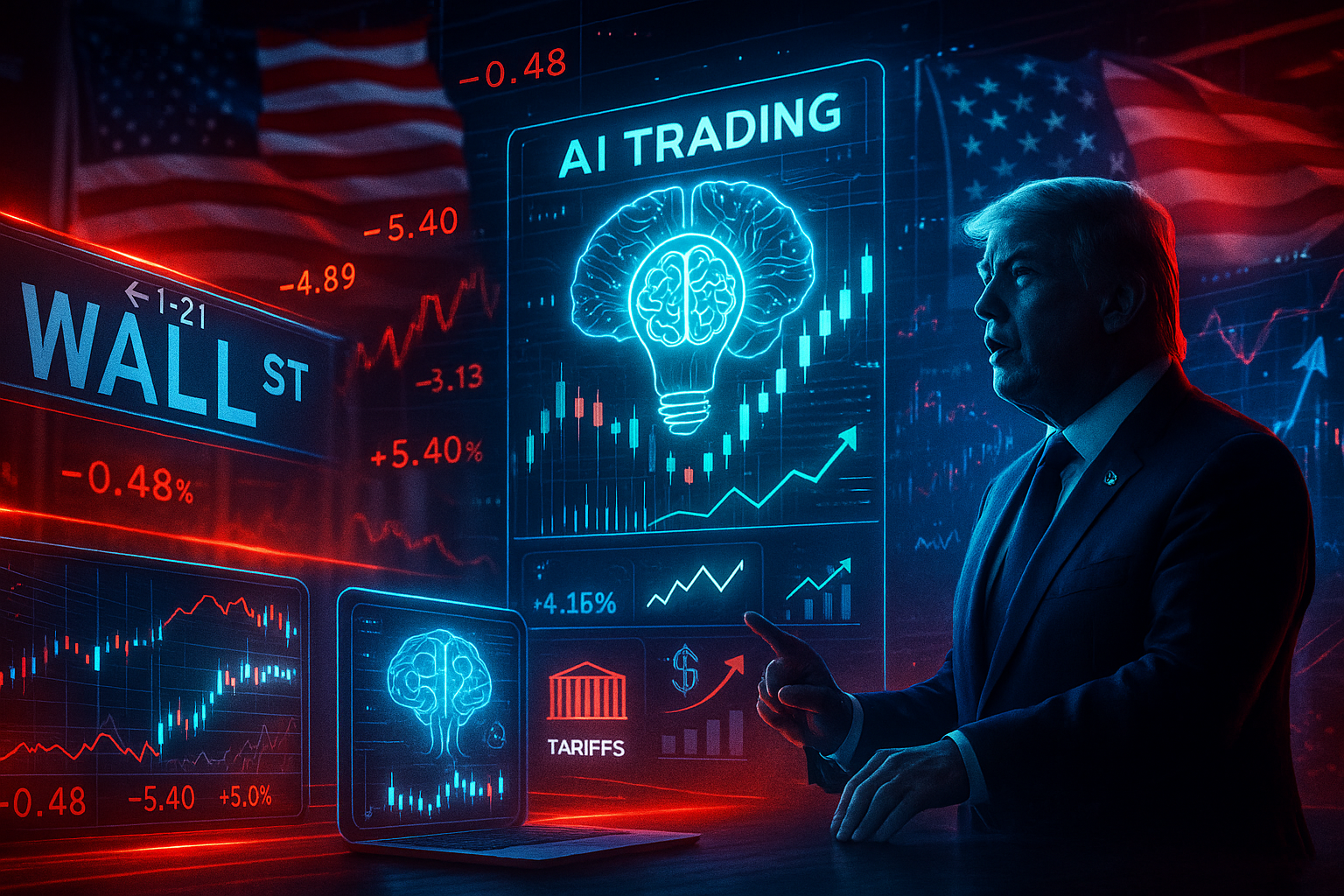
Markets didn’t crash—but can this strategy survive in 2025?
Back when former President Donald Trump launched his trade war campaign in his first term, critics sounded every alarm. There were warnings of a global economic meltdown, collapsing markets, retaliatory tariffs, and even another Great Depression.
Fast forward to 2025, and the reality is a lot more complicated—and surprising.
✅ What actually happened:
- U.S. tariffs on imported goods surged to levels not seen since the Smoot-Hawley era of the 1930s
- Customs revenue soared to record highs
- Inflation remained largely under control
- No large-scale retaliation from major trading partners
- And surprisingly, Wall Street held steady
It seemed like Trump, against all expectations, had pulled off a “trade war win”. But as we move deeper into 2025, the cracks are starting to show.
Let’s break down what worked, what didn’t, and what might happen next for traders, investors, and the broader U.S. economy.
📈 Tariffs Worked… On the Surface
The strategy was simple (though unorthodox):
- Impose high tariffs on imports from key trade partners
- Force companies to bring manufacturing back to the U.S.
- Protect U.S. jobs, especially in steel, manufacturing, and energy
- Boost customs tax revenue to offset deficits
And it sort of worked. By 2024:
- The U.S. collected over $150 billion in customs revenue
- Key domestic sectors saw a temporary revival
- Inflation, though a concern, stayed manageable due to Fed intervention and AI-driven supply chain optimization
But now, in 2025, that momentum is starting to slow.
🧠 What’s Changing in 2025?
Here are the early warning signs that Trump’s “victory” may not be sustainable:
🔻 1. Tariff Fatigue Is Real
Businesses that benefited from the trade buffer now face rising production costs, reduced competitiveness, and stagnant exports.
Even U.S.-based companies are struggling to absorb:
- Higher raw material costs
- Slower global demand
- Supply chain shifts from Asia to other regions (with no cost savings)
🔁 2. Trading Partners Are Slowly Retaliating
While the early trade war didn’t trigger immediate retaliation, by 2025:
- The EU has implemented digital service taxes hitting U.S. tech giants
- China has ramped up support for BRICS+ trade blocs, excluding U.S. companies
- India and Latin America are forming alternative alliances to avoid tariff-heavy U.S. trade
This means American exporters are feeling the pinch, even if consumers at home haven’t noticed—yet.
💸 3. Customs Revenue ≠ Economic Growth
Yes, the government collected more customs revenue.
But that doesn’t always translate into real productivity or prosperity.
Many economists argue that:
- The costs are passed to consumers
- Revenue gains are offset by reduced international competitiveness
- GDP growth is increasingly reliant on sectors not helped by tariffs (AI, digital, finance)
📉 What This Means for Traders and Markets
Despite the short-term “win,” markets are beginning to factor in the long-term economic drag of protectionist trade policies.
🧠 Key Signals Traders Are Watching:
- Yield curve shifts — signs of slower long-term growth
- Retail earnings — companies like Walmart and Target are paying more for imported goods
- Tech backlash — Big Tech’s growth in foreign markets is slowing due to new regulations
- Commodity prices — especially metals and energy are being influenced by trade reshuffling
📌 Pro Tip: Keep an eye on ETFs tracking U.S. manufacturing, industrials, and emerging markets.
🔧 How AI Tools Are Mitigating the Pain
Interestingly, AI has been one of the silent stabilizers of this entire trade experiment.
Many businesses are using:
- AI-powered sourcing tools to reduce dependency on tariff-heavy imports
- Predictive analytics to adjust pricing and inventory
- ChatGPT-powered business assistants to streamline customer service and communications
🔗 Related: How AI Helps Small Businesses Survive Trade Shocks
🔮 What’s Next? Could the “Victory” Unravel?
As the 2025 presidential race heats up, Trump’s trade legacy is once again front and center.
Here’s what could tip the balance:
- A new global trade bloc excluding the U.S.
- Rising inflation from supply-chain constraints
- Consumer backlash as prices tick up again
- A new administration rolling back tariffs
The “win” may have been real—but so were the long-term consequences, now bubbling to the surface.
📊 Final Thought: Markets Love Stability — Not Surprises
Traders and investors should remember:
- The short-term gain from tariffs may fade
- AI and automation helped delay the pain, but not erase it
- Global trade is shifting—and U.S. dominance isn’t guaranteed
“Tariffs alone don’t build prosperity. Smart trade, smart tech, and smart policy do.”
